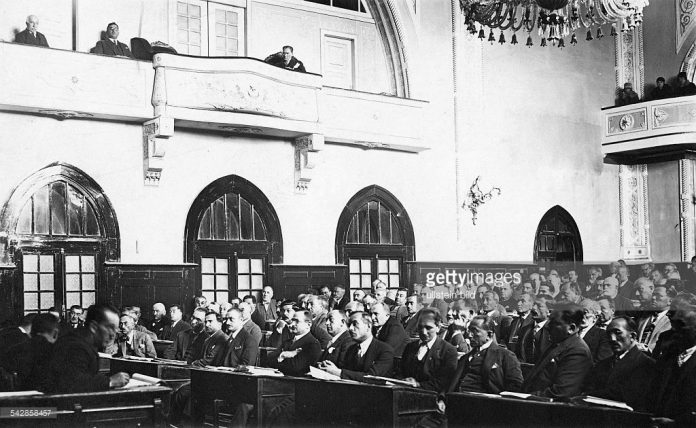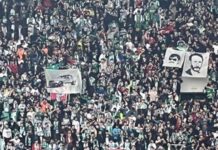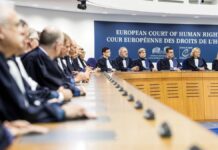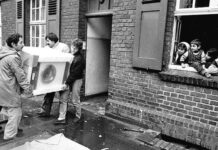“Napoleon III’s attitude towards electoralist politics was ambiguous, and this is what makes it interesting.” (1)
Steven Cook is a familiar name to those of us interested in Turkish politics and history. A long-time think-tank pundit on Turkish issues (amongst other topics), and now Senior Fellow at the Council on Foreign Relations, Cook recently published a Foreign Policy article (2) which attempts to provide a historical interpretation of the “Turkish-Kurdish conflict.” Cook’s article is a generally admirable attempt to explain the topic to those interested. But the problem running through his discussion is that his understanding of Turkish history is obsolete, and his article perpetuates myths that are in the process of deconstruction.
There are aspects of Cook’s article which are simply factually wrong. In the first paragraph, for example, two errors are present. The first is that 500 civilians is a gross exaggeration for the past eight months’ civilian death toll, and buys into PKK propaganda pushing such figures. In reality, the PKK tries to portray its militants as civilians, and the Turkish state security forces have been remarkably careful and restrained, especially in light of how, in the past, these same security forces used to operate.
A second error is stating that Turkish state security forces “have laid siege” to towns in Turkey’s Kurdish provinces. In reality it is the PKK which has taken entire neighborhoods hostage, constructed barricades and trenches, lined streets and buildings with IEDs, and tried to prevent local residents from leaving (in order to use them as human shields against the army and the police). The “razed buildings” are those the PKK has blown up while trying to kill members of the Turkish security forces (3). Even Cook’s terminology portrays bad faith: “insurgent” is a disingenuous term for the PKK. The PKK are violent militant leftists armed not only with AK-47s but also an ideology straight out of the Cold War.
These facts have also been pointed out, and repeatedly, too, by other observers. The more important aspect of Cook’s article is that his overall interpretation of the current situation is faulty. Cook frames his piece around the idea that the conflict between the Turkish state and the PKK is a war of nationalisms or identities. In order to construct his argument he depends on bricks from the quarry of Turkish history, especially Mustafa Kemal Atatürk’s legacy. The problem is that he has no mortar for the joints.
So let me first state what we can say about Mustafa Kemal’s historical legacy: there is no doubt that he was a military and political figure of exceptional ability, maybe even genius. At Gallipoli, although commanding only a division most of the time, he was the single battlefield factor most responsible for the Ottoman victory. The Gallipoli success set the stage for the Turkish nationalist triumph over the Entente powers that had occupied parts of Anatolia after the conclusion of WWI. And it was also Mustafa Kemal’s military and political vision that led to that victory.
But after that point, the scene changes. The “One-Party Era” of Turkish politics, the years from 1925 to 1946/50, is still largely exempt from in-depth criticism in Turkish “official” history. The “National Leader” years of İsmet İnönü’s Presidency (1938-1950) have been subject to much more intense scrutiny in the past ten to fifteen years, largely thanks to the efforts of Sabancı University’s Professor Cemil Koçak. Criticism of İnönü is now much more visible in Turkish political dialogue.
But the years until Atatürk’s death in 1938 are still off-limits to serious, in-depth historical examination.
The critical issue is that the personality cult erected around Atatürk has never been dismantled. Unlike other societies which saw personality cults (Fascist Italy, Nazi Germany, Soviet Russia, etc.), Turkish society has never experienced a cataclysm capable of disintegrating Atatürk’s personality cult under the impact of massive political change and historical reality. However, that process is now taking place in a gradual, peaceful way.
Strangely for an expert on Turkish affairs, Cook displays no awareness of Princeton Professor Şükrü Hanioğlu’s works on the Committee of Union and Progress (CUP) or Mustafa Kemal’s intellectual background (4). Those texts have rather precsiley described and defined the CUP’s and subsequently Mustafa Kemal’s intellectual and ideological motivators. And Hanioğlu’s conclusions are not only extremely disturbing but also, in the light of Mustafa Kemal’s real actions, highly persuasive.
The CUP leadership, all members of the late Ottoman elites, were motivated by a toxic brew of radical European ideologies transferred to Ottoman society through two or three channels. They comprised: Comtean Positivism, a radically scientistic and anti-religious ideology; Ludwig Büchner’s “scientific materialism”, which maintained that only matter exists in the universe; Social Darwinism; Gustave Le Bon’s elitist, anti-democratic, manipulative mass sociology; Colmar von der Goltz’s German socio-militarism, which essentially envisioned a society as a large army — all on top of a bedrock of (Turkish) nationalism. The military, bureaucratic, and intellectual elites influenced by these ideas were the core of the CUP, and they had gained direct political control over the Ottoman state by January 1913.
Mustafa Kemal was a CUP member who had also assimilated and internalized all the ideas listed above. That is to say, the “imagination” of Atatürk that Cook refers to was packed with concepts and ideologies that, in hindsight, no longer appear so wonderful. The fame that accrued to Mustafa Kemal from the Gallipoli victory, and the fact that he was not tainted by the CUP’s actions against the Ottoman Armenian population during the war, made him the best candidate to lead resistance to the post-WWI occupying powers. Once that struggle was concluded successfully, he was in a position to implement the ideologies he had long embraced. He proceeded to do just that.
(to be continued)
NOTES
(1) Eric Hobsbawm, The Age of Capital, “Chapter Six: The Forces of Democracy.”
(3) For examples: http://www.gazetevatan.com/nusaybin-de-tuzak-1-sehit-4-yarali-927777-gundem/; http://www.dunya.com/toplum/polis-adliye/tuzaklanan-bomba-patladi-6-polis-sehit-295492h.htm
(4) These three books are: The Young Turks in Opposition (1995); Preparation for a Revolution: The Young Turks, 1902-1908 (2001); and Atatürk: An Intellectual Biography (2011). None of these books has been translated into Turkish.













